What exactly is a repeater watch and how does it work? To start briefly, here's a first explanation: A repeater watch is a mechanical timepiece that can display the time not only by hands, but also by sound if a trigger is pushed. When the repeater mechanism is launched a small hammer strikes a gong. The technique of the repeater movement was invented in a time without electricity. As people began to have their own watches, they were not able to read them in the darkness. Thus, the desire arose to be able to find out about the current time audibly upon request.
We would like to explain the functionality by using an example in this article. We look at the NIVREL 5-minute repeater in more detail. More specifically, it is the latest special edition, the Repetition Classique SE 2012.
Part I: Watch case, dial, hands and base movement
First, those parts of the watch are shown that are not directly involved in the repeater mechanism:
1 The single case parts: Case body, case back, bezel with sapphire crystal, pusher to launch the repeater, case gaskets and case back screws.

2 Dial and hands: the dial with the distinctive 'red 12' as well as the hands for hours, minutes, and sweep second in Breguet-style:
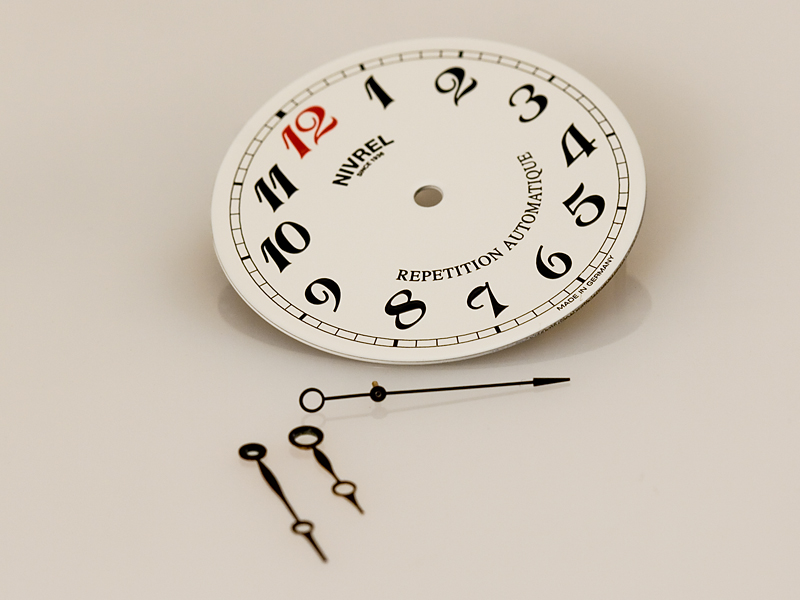
3 The base movement: NIVREL version of ETA 2892-A2 and the rotor for the automatic winding mechanism:
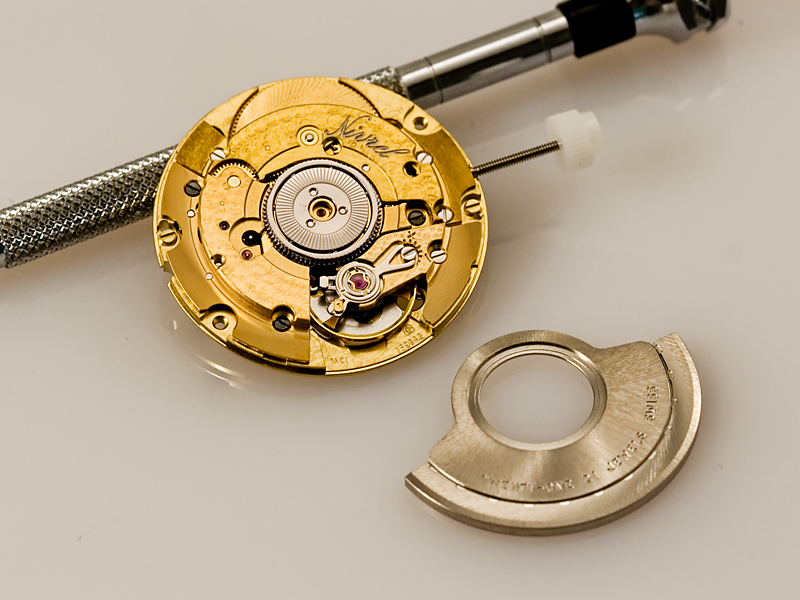
Part II: The repeater mechanism
The so-called repeater module is mounted on top of the base movement. It is designed by Dubois Dépraz and has been used by NIVREL for many years. In its finished, refined state as shown in the picture, the module provides a beautiful sight:
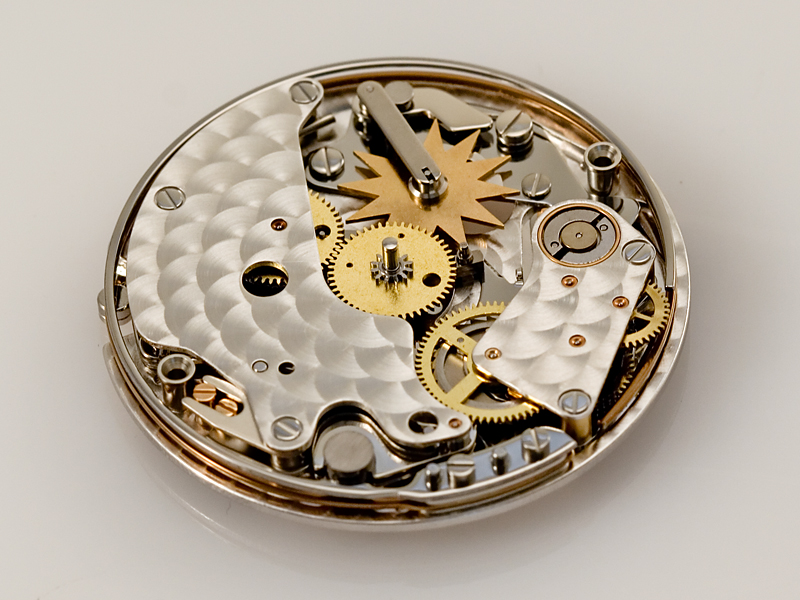
The function itself is explained easily. By launching the pusher of the watch case, the watch chimes the past hours with a single strike on the gong. Afterwards, the past 5-minute intervals of the current hours are chimed with a slightly offset double strike on two gongs.
Example 1: 3:15 o’clock - the watch chimes three times for the hour, and three times for the minutes
Example 2: 11:52 clock - the clock strikes eleven times for the hour, and ten times for the minutes (10 past 5-minute step intervals within the current hour).
But which are the main parts of the module that actually make the watch chime? First of all, the module needs to be notified, what time it is so that it is able to chime the right amount of hours and 5-minute intervals. Three central wheels in the module serve this purpose: the minute driver wheel (1), the 5-minute indication wheel (2) and the hour indication wheel (star wheel) (3).

The minute driver wheel (1) is attached to the base movement. Thus, the repeater module learns what time it is. The driver wheel turns in harmony with the minute wheel of the base movement.
The minute driver wheel interlocks with the 5-minute indication wheel (2). The technique that counts the past 5-minute steps in the module can be found on the lower side of the wheel and can be described as sort of a slide-rule. The following picture shows the lower side in details.
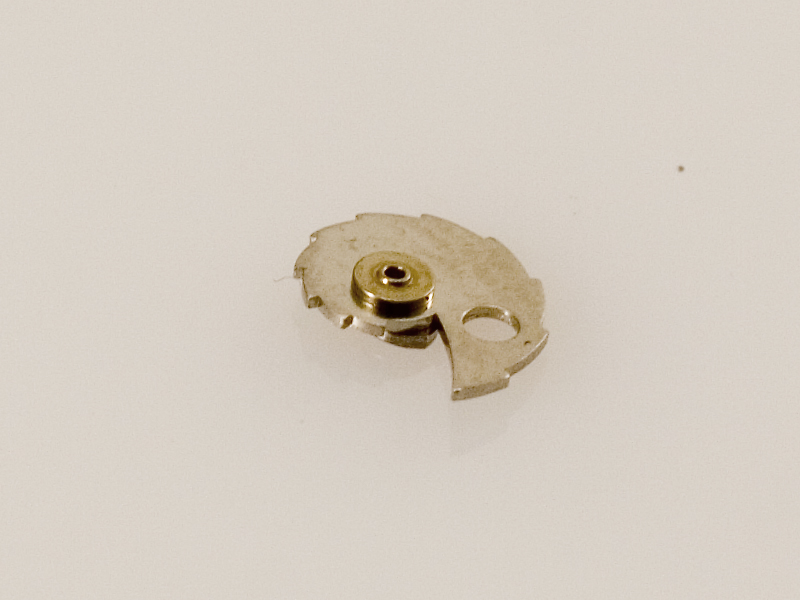
When a full hour has elapsed, the pointed end on the bottom of the 5-minute indication wheel interlocks with the hour indication wheel (3) (the distinctive star) and pushes it one position (one tip) further. Thus, also the hour indication wheel below the star wheel receives a new position and the repeater will chime one hour more than before the switch phase. Simplified you can say that the hour indication wheel works on the same principle as the 5-minute indication wheel. On the bottom of the wheel is a slider from which the module can read the current hour. For a better understanding, the following picture once again shows the 5-minute indication wheel (4) and the our indication wheel (5):
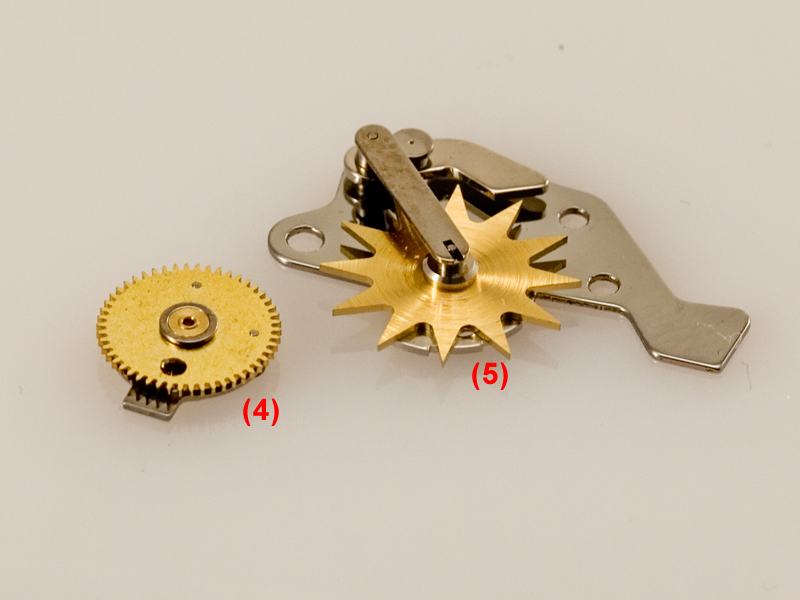
The complete interaction between the minute driver wheel, the 5-minute indication wheel, and the hour indication wheel is shown in the followig video:
Since the module know has earned knowledge about how many hours and five-minute intervals it has to chime, the mechanism only needs to be launched. Playing the sound itself works a little bit like a mechanical music box for infants. By pressing the pusher button on the case the chime mechanism is cocked. The pusher engages in a lever (6) inside the module that cocks the mechanism.
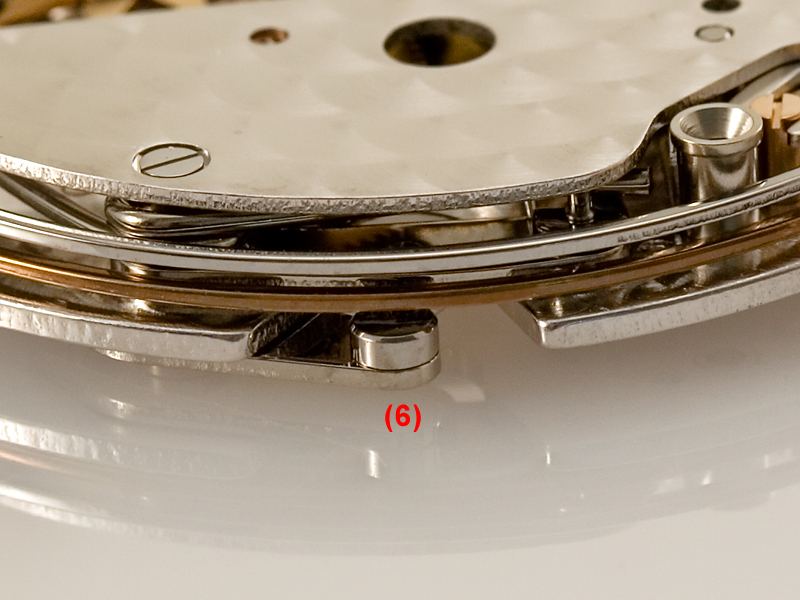
During the chime process a hammer (7) strikes against a gong, which runs completely around the module. Specifically, one hammer strike against the top gong of the module (8). During the 5-minute chime, same hammer strikes against the same gong and a second hammer strikes slightly offset against the lower gong (9).


The following figure shows the single gongs, prior to being placed into the repeater module:

In the following video the gongs are mounted into the module:
Last but not least we do not want to keep as a secret what a finihed repeater watch sounds like. Enjoy... and thank you very much for your attention!


